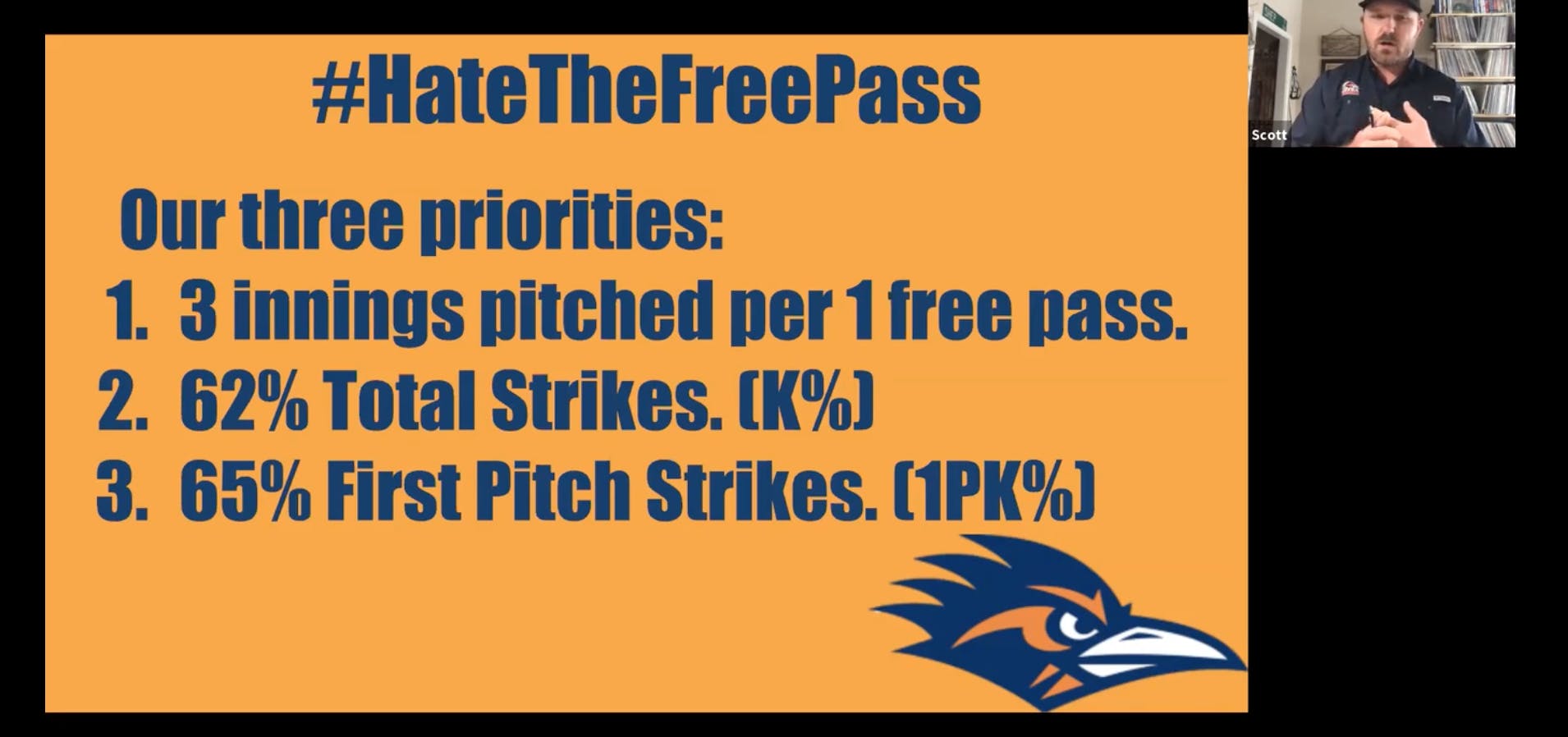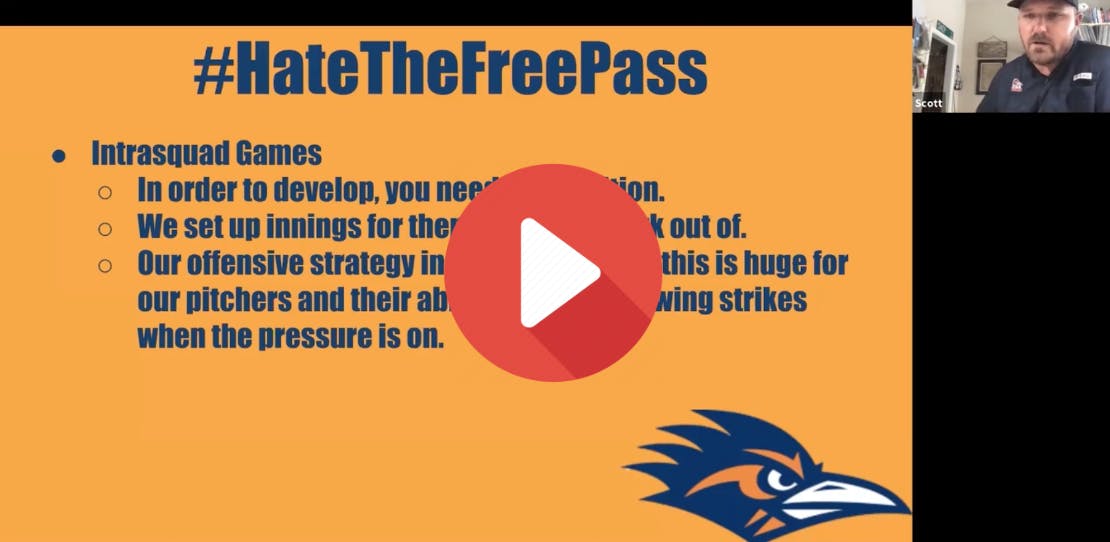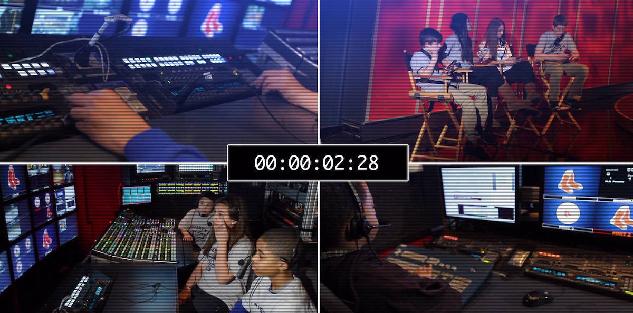Featured courses
- Understanding The Shift by Brandon Ogle
- Two Drills to Improve Outfield Movement and Communication by Grant Young
- The Ultimate Resource For Coaching Youth Baseball by Jackson Chlebowy
- Become a Master at Bunting by Brandon Ogle
- 5 Reasons Why There Is More To Good Base Running Than Just Speed by Brandon Ogle
- Three Injury-Prevention Tips For Your Offseason Pitching Program by Grant Young
- How to Teach Hitting to the Next Generation by Grant Young
- Developing Defensive-Minded Baseball Catchers by Grant Young
- 3 Baserunning Tips to Score More Runs in Baseball by Grant Young
- 5 Outfield Drills to Work on in Season by Alec Burris
- Keys For Scoring More With Runners on First and Third Base by Grant Young
- How to Develop Your Game to Become a Five-Tool Player by Brandon Ogle
- 3 Coaches Share the Keys to Running Baseball Practice the Right Way by Grant Young
- Four Drills to Sharpen a Baseball Hitter’s Vision at the Plate by Grant Young
- Four Quotes to Hit Better With Two-Strikes by Grant Young
- Four of Former MLB Pitcher Juan Nieves’ Movement-Based Pitching Drills by Grant Young
- Two Tips For Developing an Elite Baseball Bullpen by Grant Young
- Overcoming the Four Challenges of Indoor Baseball Practices Because of Weather by Grant Young
- Three Tips to Make Your Baseball Team Mentally Tougher by Grant Young
- Three Priceless Philosophies to Motivate Your Baseball Team by Grant Young
- Three Offseason Baseball Drills to Simulate Competition by Grant Young
- Three Baseball Offseason Strength and Conditioning Essentials by Grant Young
- Important Ways to Improve Your Baseball Team’s Baserunning by Grant Young
- Three Ways to Perfect Hitting Mechanics From an MLB Icon by Grant Young
- Catchers can influence pitchers...for bad or good by Drew Johnson
- Throwing Strikes and Playing Good Defense Equals Wins by Jose Ortiz
- Legendary Indiana Head Baseball Coach Bob Morgan’s Offensive Theory by Grant Young
- Tennessee Head Baseball Coach Tony Vitello on How to Practice Baserunning by Grant Young
- Three Great T-Ball Drills For Youth Baseball Players by Grant Young
- How to Manage a Baseball Pitching Staff by Grant Young
- Three Uncommon Tips to Become a Better Hitter by Grant Young
- How a Baseball Coach Can Develop Strike Throwers by Grant Young
- Drills to Develop Elite Baseball Outfielders by Grant Young
- Baseball Training Exercises to Strengthen Arm and Bat Speed by Grant Young
- How to Use Bunting to Score More Runs by Grant Young
- How To Build An Elite Baseball Infielder by Grant Young
- Three Drills to Improve Your Baseball Team's Infield Play by Grant Young
- Three Keys to Curating a Pitching Staff’s Success by Grant Young
- 3 Techniques to Develop a Baseball Player’s Hitting Approach by Grant Young
- How to Cultivate Confidence Within Your Pitchers by Grant Young
- 5 Every Day Drills To Help You Become A Better Catcher by tyler Linderman
- How to Throw A Curveball by Brandon Ogle
- How to Assemble a Lock-Down Bullpen by Brandon Ogle
- How to Throw a Sinker by Brandon Ogle
- How to be a Smart Baserunner by Brandon Ogle
- Improving a player's slugging average by Phillip Woolgar
- The 8 Fundamentals of Pitching by Drew Johnson
- How to Throw a Deceiving Changeup by Brandon Ogle
- Step Up Your Outfield Defense With These Three Drills by Jose Ortiz
- 8 Baseball Drills Every Player Should Practice by Drew Johnson
- How To Become An Elite Defensive Outfielder by Tyler Linderman
- 5 Tips For Crushing A Curveball by Johnny Grassi
- LEGENDS FOR YOUTH INCLUSION BASEBALL CLINIC by Phil
- Fourteen Ways To Turn A .300 Hitter Into A .210 Hitter by Jay P. Granat, Ph.D.
- How To Become The Ideal Leadoff Man by Brandon Ogle

How a Baseball Coach Can Develop Strike Throwers
- By Grant Young
Being able to throw strikes is the most important part of youth baseball pitching. We have all seen youth baseball games that drag on forever because the pitcher can’t put the ball over the plate.
While most kids are worrying about trying to throw the ball as hard as possible, or asking when they can learn how to throw a curveball, actual success on the mound stems from throwing consistent strikes.
And because a kid’s enthusiasm for baseball is strengthened by succeeding, teaching kids how to be accurate while pitching is a paramount part of increasing their enthusiasm for the sport.
Coach Scott Shepperd knows a thing or two about properly teaching pitchers. Shepperd recently served as pitching coach at the University of Texas, San Antonio for two seasons. Prior to that, Shepperd was the pitching coach for Hallmark at Incarnate Word the previous two seasons. Under his tutelage, the Cardinals pitching staff lowered the team's ERA by more than three runs per game. His nine years of coaching at the Division 1 level have taught him a ton about what it takes to build and maintain a successful pitching staff.
And while succeeding in Division 1 baseball requires much more than succeeding at the game’s lower levels, the first and foremost part of the equation is throwing strikes.
Shepperd’s ‘Developing Strike Throwers’ course takes coaches through all of the different components of teaching accuracy on the mound. He details the various mental and physical aspects that go into this endeavor, and we have pulled a few of our favorite lessons from Shepperd’s course, and distilled them into easily digestible sections that should provide you with a better idea of how to make your own pitching staff throw consistent strikes.
‘How Many Pitches Get to The Edges?’ Edges?’
One of the most common misconceptions when it comes to throwing consistent strikes is that pitchers should remain on the corners of the strike zone. This is often because young catchers will be setting up on the outside corner, prompting their pitcher to throw it there because they’re afraid of their pitcher leaving it over the middle.
Aside from when the game plan is to expand the zone in a strikeout situation, Coach Shepperd instructs his catchers to always set up over the strike zone’s middle.
“We’re encouraging the pitcher to throw the ball over the plate, and encouraging contact,” Coach Shepperd says.
He then discusses how he never uses the term “perfect pitch” with his pitchers. The reason he avoids doing so is because it makes pitchers feel a need to pinpoint a ball to a specific spot, rather than execute their pitch to one segment of the strike zone. And this usually doesn’t lead to good outcomes.
One important point Coach Shepperd alludes to in this section is that the art of executing pitches has just as much to do with the catcher as it does with the pitcher. The way a catcher sets up, frames, and generally receives the ball can often be the difference between a ball and a strike.
This is important for youth catchers to understand as well, so they can keep that in mind as they continue to progress in the sport.
‘Our Three Priorities’orities’
Coach Shepperd keeps his pitching staff’s focus on three priorities when they’re on the mound. Those three priorities (in order) are:
1. Only allow 1 free pass for every 3 innings pitched.
2. Have a 62% strike percentage.
3. 65% first pitch strikes.
The first priority is simple. For every three innings pitches, only allow one free pass (a walk or a hit by pitch). This equates to less baserunners, which equates to less runs scored and more games won.
The reason that Coach Shepperd decided on 62% for total strikes is because that was the MLB average for strikes that were thrown in the season he created these three priorities. And since then, Coach Shepperd has found that if his pitching staff has thrown 62% or more strikes in a game then it usually amounts to a good performance.
Coach Shepperd notes that the 65% first pitch strikes is the third priority because it’s the toughest to achieve. Yet, he keeps it at that number because it gives his pitchers a reachable goal, but is still tough.
Of course, none of these numbers are realistic if you’re coaching youth baseball. But the point is that regardless of what level you’re coaching at, minimizing free passes, throwing strikes, and throwing first pitch strikes should be a central priority for you.
Another important point Coach Shepperd drills into his players’ heads is that they’re in control of the game. They have the ball in their hand, and they’re in the diamond’s center. Yet, all they need to do is hit those three priorities to be a hero for his team.
‘Intrasquad Games’d Games’

Coach Shepperd claims that intrasquad scrimmages (when his team divides into two smaller squads and plays) is, “our biggest factor in developing strike throwers, because we play a lot of them.”
He then discusses how his pitchers need to compete and feel the pressure during these moments when the games don’t count, so that they’re prepared for those feelings when the games do begin to matter.
In these intrasquads, Coach Shepperd will curate scenarios for his pitchers to perform under (such as, entering the game with runners on first and second base with no outs), in order to get those necessary repetitions.
Feeling the pressure is a main reason why pitchers struggle to throw strikes. Which is why getting pitchers acclimated to the pressure as early and as often as possible is crucial.
If your youth team doesn’t have enough players to field a full intrasquad scrimmage, you could set up a live batting practice, where a pitcher faces a series of hitters with little or no fielders aside from a catcher.
Utilizing Coach Sheppherd’s wisdom will have your pitchers executing strikes in short order.



